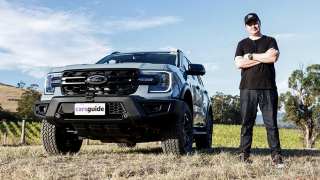The collective opinion of our team of journalists was that the Corolla had the best balance of curves and lines, while the Mazda had the most aggressive styling, and the Cerato… well, everyone here preferred the previous-generation model.
There’s none of the spunk and European-ness that we all appreciated about the old Cerato. Mercedes-Benz clearly liked it, virtually copying elements for its new-gen A-Class hatch. But in this generation, it looks awkward - part of that comes down to the fact the Cerato seemingly doesn’t know if it’s a hatch or a wagon, and the rest of it comes down to the fact the bumpers are all wrong for a base-model car. Having piano-black highlights front and rear, not to mention a rally-spec air diffuser, just doesn’t work - especially with steel wheels and plastic wheel covers.
The Mazda3’s thick C-pillar and tiny glasshouse lend it a coupe-ish profile, a bit like the Alfa Romeo Brera. Lots of people love it, but those who don’t, really don’t. The blacked-out mask-style grille and slinky headlights give it a caped-crusader vibe, but the front-end design is let down by halogen daytime running lights, which anchor the design in reality. The Mazda may have more street appeal to the majority of people, but the oversized C-pillar and non-convex driver’s side mirror make visibility for the driver poor by comparison.
The Toyota’s sculpted rear and sharp front end work really well in combination, and the Corolla’s standard LED headlights and DRLs mean it looks of its time - and the fact it’s the oldest design of these three - having gone on sale in 2018, where the other two launched in 2019 - is testament to the fact this look will hold up well.
The interior design of each of these cars is vastly different, too. That’s partly down to the sizes and shapes used for the metalwork, and also to the materials used.
The Corolla is the sportiest - more aggressive lines and angles inside the cabin, nice materials that aren’t luxurious but don’t come across as budget either, and the most comfortable and sculpted seats up front and in the rear.
The Mazda’s cabin is gorgeous. The materials look plush and high-end, and friends and family might be convinced you’re driving something considerably more expensive. If you like getting into a car that feels more pricey than it is, it could be enough to get you across the line. Just be aware that it feels very dark inside.
The Kia has lots of plastics that are difficult to come to terms with (a bit like the exterior!), including extensive hard plastic on the doors and materials that tell you you’re in a budget hatchback. That said, the dashboard looks great, and the ergonomics are all spot-on.
| Kia Cerato S | 6 |
| Mazda3 G20 Pure | 8 |
| Toyota Corolla Ascent Sport | 8 |











































 Kia Cerato
Kia Cerato